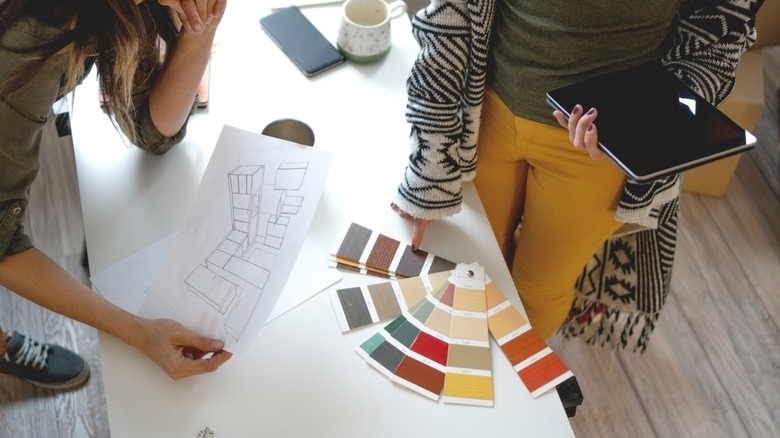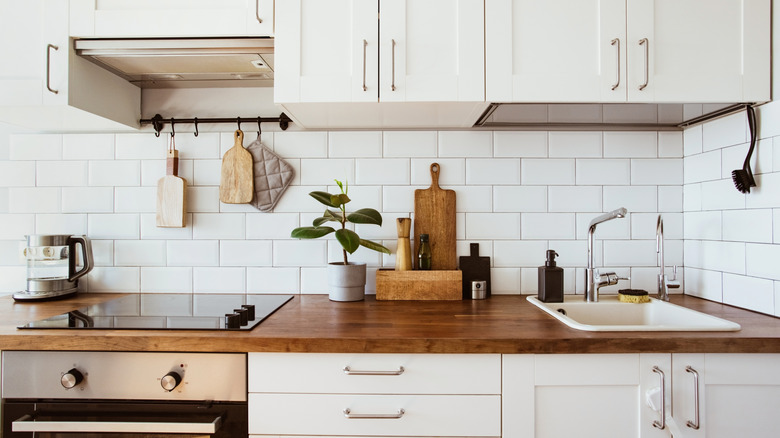The Color Mistake That's Making Your Kitchen Feel Flat & Boring
There are rules to follow when designing a new kitchen. This is especially true for homeowners trying to come up with a cohesive look through colors or finishes, causing them to fall into the trap of choosing cabinetry, countertops, and backsplashes that are all the same hue. This often leads to an all-white kitchen due to its ongoing popularity. Some individuals believe they brighten up a space and create a blank palette that can match any decor style. However, many homeowners realize after they have made this design choice that it leaves their space feeling flat and lifeless in its uniformity. Using a single color or material across all major surfaces might feel like a safe bet, but we urge you to reconsider.
While all-white kitchens are classic in concept, using a single color can actually lack depth and create an uninviting atmosphere. With the exception of small kitchens, where the sense of continuity that a single color brings can make a room appear larger, using one color throughout has real downsides. All-white kitchens may feel sterile, but they often show every smudge, fingerprint, and splash of sauce or oil grease that accumulates from your daily kitchen activities. They might even decrease the value of your house. Luckily, there are better ways to approach the design so you can add depth and dimension to your space.
Add contrast to your kitchen instead
The best way to approach a winning color combo for your kitchen surfaces is considering thoughtful and subtle contrast. Instead of matching every surface, introduce variation through materials, textures, and color differences. This doesn't mean you have to abandon the bright, open look many homeowners love — it just means incorporating design elements that bring warmth and character. For example, if you're aiming for a light and airy space, consider replacing white with a warm neutral like cream, taupe, or soft beige. These colors still offer brightness but feel more inviting. Breaking up the colors helps add dimension, as well — like pairing a taupe cabinet with an off-white quartz countertop and a patterned backsplash.
Consider introducing other textures like natural wood to ground your kitchen design and prevent it from feeling too cold. Light oak countertops or a walnut island adds natural warmth and contrast beautifully against painted cabinets and stone surfaces. Even small touches — like open wooden shelves or butcher block accents — can introduce texture and visual interest. Another interesting way to avoid a flat-looking kitchen is by selecting stone that adds character to your room. Instead of solid white countertops, look for quartz, marble, or granite with soft veining or flecks of color that will introduce a subtle visual complexity. Whatever you choose, just remember that a cohesive kitchen doesn't have to be monotone. In fact, the most beautiful, inviting kitchens often use contrast to truly elevate the space.

